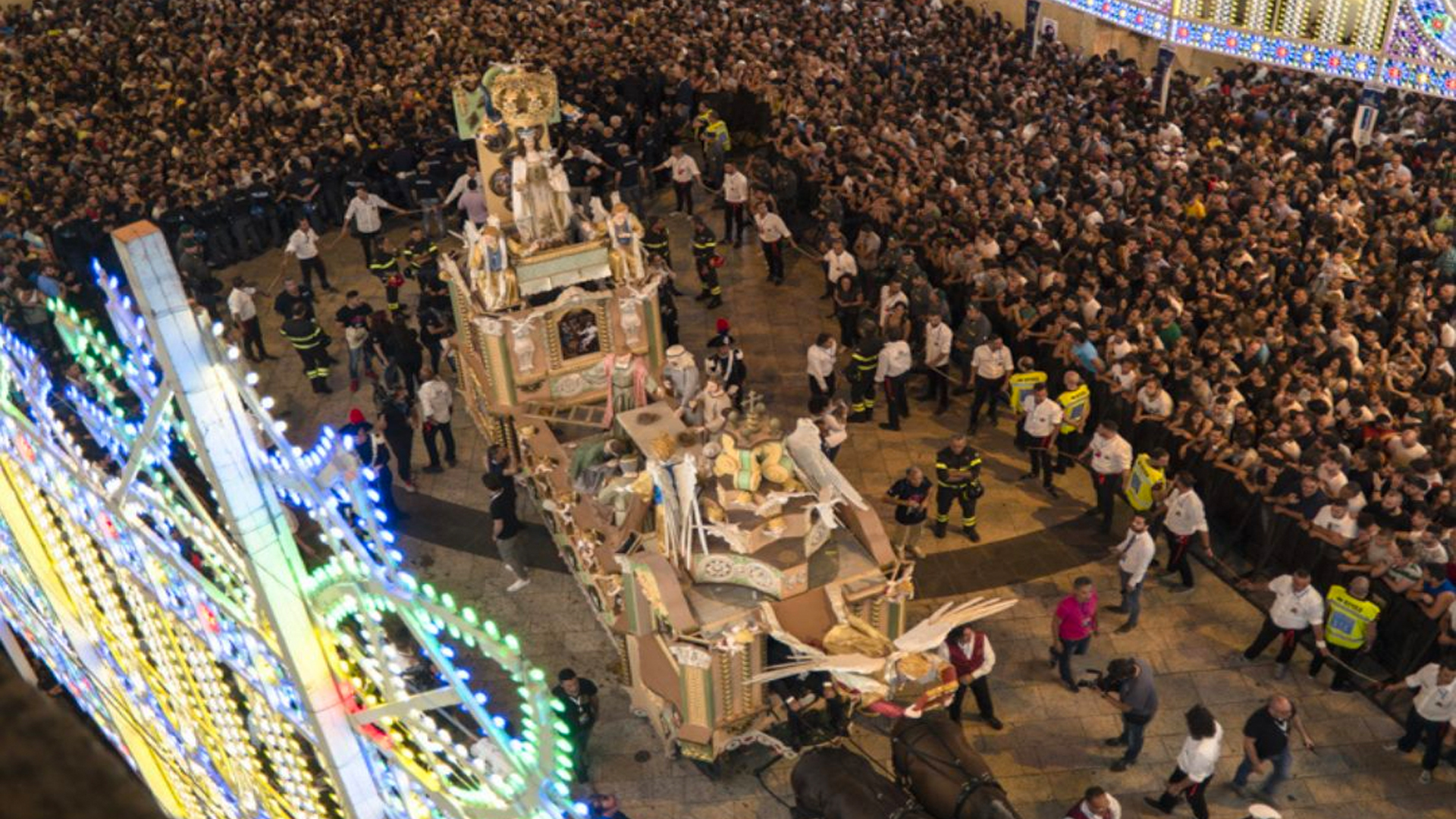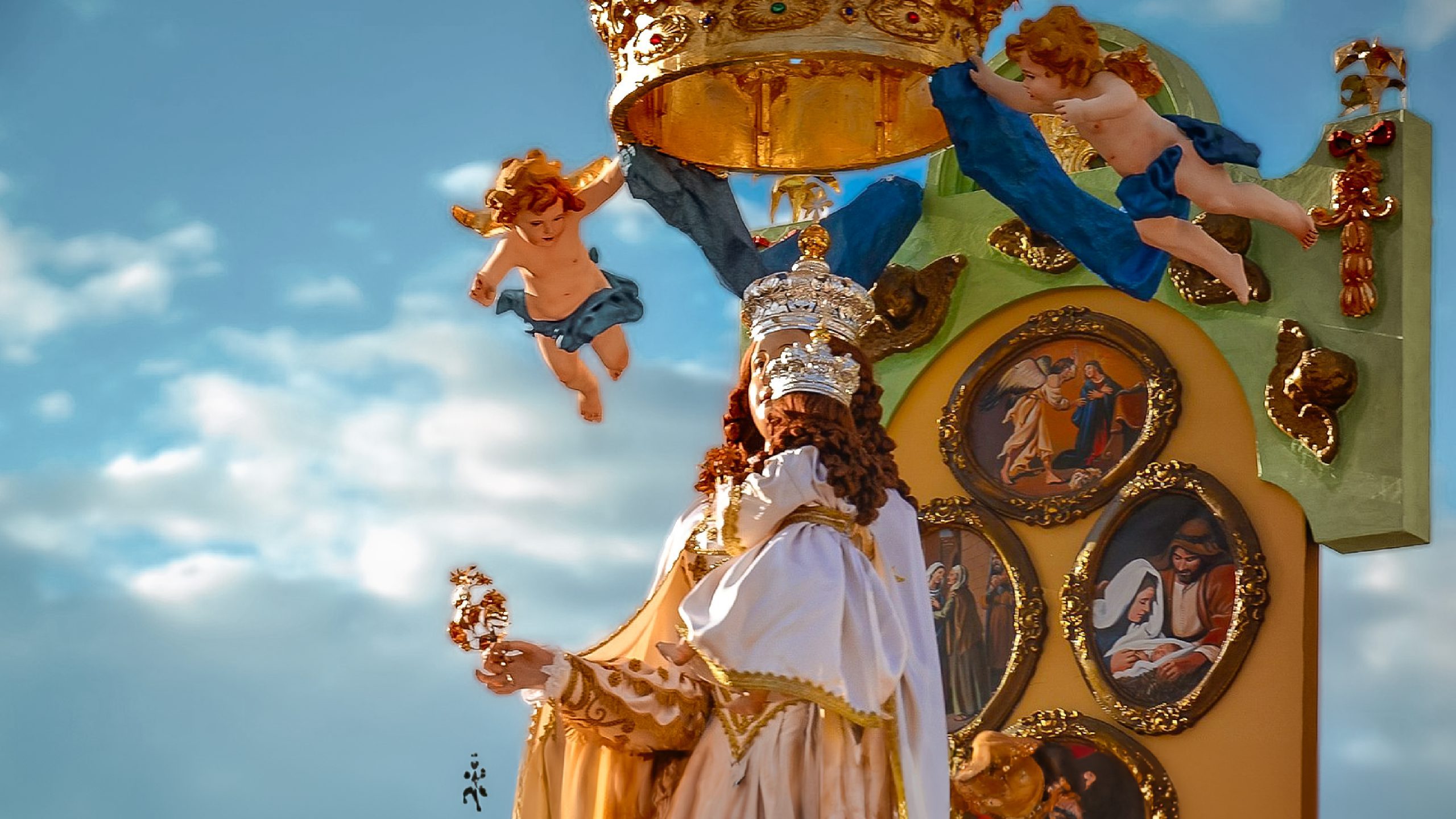Every July 2nd, the ancient town of Matera, located in Italy’s southern Basilicata region, celebrates the Festa della Bruna, a festival dedicated to the Madonna della Bruna, the town’s patron saint. Attended by thousands of visitors, the religious festival is complemented by lights, bands, processions, and a grand firework display. Held every year since 1389, which made this year’s festival its 633rd edition, it is considered to be Matera’s most important day.
When did the festival begin?

While the festival’s origins have been lost to history, legend has it that in the 14th century, a farmer traveling to Matera came upon a young woman on the side of the road and offered her a ride on his cart. As they approached the town, she got off and asked the farmer to tell the bishop that she was Madonna, the mother of Christ. The farmer quickly fetched the bishop and the townspeople who excitedly came to welcome the Virgin Mary to their town, but upon arriving only found a statue of her. This statue was consequently brought into the city’s main cathedral on a decorated triumphal chariot, where it remains today.
How does Matera celebrate la Festa della Bruna?

Leading up to the day, Matera’s winding stone streets are strung with colorful lights and arches. Up until the 16th century, the festival mainly consisted of the processione dei pastori, the procession of shepherds, which took place at dawn. Now, the celebrations kick off with a Holy Mass that takes place at 5 a.m. in the town’s main cathedral.
This is then followed by a procession in which the statue of the Madonna della Bruna, placed on a triumphal float designed by a local artisan, is trailed by horses, musicians, and townspeople dressed in Medieval costumes. The triumphal float, which is designed and created each year, makes a loop of the town before returning to Matera’s main cathedral, where the statue is dropped off.
The float is then paraded back to the town’s main square, where tradition dictates that local men must take part in savagely destroying it. Legend has it that those who manage to keep a piece of the float will be blessed with good fortune in the following year. The destruction of the float is often violent and physical, and this past year alone more than 10 people were seriously injured during the tradition. The festival ends at night with a grand fireworks display.
Asia London Palomba
Asia London Palomba is a trilingual freelance journalist from Rome, Italy. In the past, her work on culture, travel, and history has been published in The Boston Globe, Atlas Obscura, The Christian Science Monitor, and Grub Street, New York Magazine's food section. In her free time, Asia enjoys traveling home to Italy to spend time with family and friends, drinking Hugo Spritzes, and making her nonna's homemade cavatelli.

